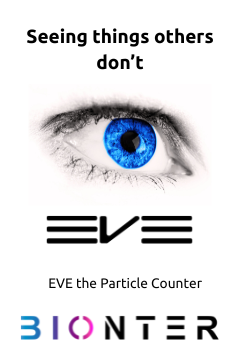Advertisement

Product › Details
Onpattro™
 |
Next higher product group | patisiran |
 |
Status | 2018-08-01 registration start |
Alnylam Pharmaceuticals, Inc.. (8/30/18). "Press Release: Alnylam Receives Approval of Onpattro (patisiran) in Europe". Cambridge, MA.
– ONPATTRO Indicated for the Treatment of Hereditary Transthyretin-Mediated (hATTR) Amyloidosis (hATTR amyloidosis) in Adults with Stage 1 or Stage 2 Polyneuropathy –
– First-Ever RNAi Therapeutic Approved in the European Union (EU) –
Alnylam Pharmaceuticals, Inc. (Nasdaq: ALNY), the leading RNAi therapeutics company, announced today that the European Commission (EC) has granted marketing authorization for ONPATTRO™ (patisiran) for the treatment of hereditary transthyretin-mediated (hATTR) amyloidosis in adults with stage 1 or stage 2 polyneuropathy. ONPATTRO is based on Nobel Prize-winning science and is the first-ever RNA interference (RNAi) therapeutic to be approved in the European Union.
“Today’s approval is the result of many years of dedicated effort and marks the next step towards bringing a potentially life-changing treatment to patients with hATTR amyloidosis and their families. Patisiran has been shown to improve polyneuropathy, quality of life and activities of daily living,” said Theresa Heggie, Head of Europe, Alnylam Pharmaceuticals. “This is the start of a new chapter in the treatment of this rare, rapidly progressive, fatal disease. We want to express our profound gratitude to the patients who participated in the patisiran clinical trials and their families and caregivers who supported them, as well as the investigators and study staff, without whom this important milestone would not have been achieved. We look forward to applying our innovative therapeutic approach to help patients with other rare diseases in the future.”
“Until recently, patients diagnosed with hereditary ATTR amyloidosis faced an uncertain future. A lack of treatments to halt or reverse the progression of disease resulted in a gradual and inescapable decline in their day-to-day functioning, placing a heavy burden not just on the patient themselves but on their partners and families, many of whom end up being full time carers,” said Professor Philip N. Hawkins, Ph.D, FRCP, FRCPath, FMedSci, National Amyloidosis Centre, Division of Medicine, and University College London Medical School, Royal Free Hospital, UK. “Patisiran has the potential not only to transform these patients’ lives but to change the way in which we think about and treat hereditary ATTR amyloidosis.”
Many serious, chronic and life-threatening diseases, such as hATTR amyloidosis, are caused by a fault or mutation that interferes with the way the body manufactures proteins. RNAi is a completely new approach to the treatment of these diseases; targeting the faulty protein that is causing the disease rather than treating the symptoms. RNAi therapeutics are an entirely new class of medicines.
The EC decision was based on the evaluation of the effects of patisiran in hATTR amyloidosis patients with polyneuropathy and its safety profile as demonstrated in the APOLLO Phase 3 study. The Summary of Product Characteristics (SmPC) includes data from APOLLO on primary and secondary endpoints, as well as exploratory cardiac endpoints. The European Medicines Agency reviewed patisiran under the accelerated assessment procedure that is granted to medicines judged to be of major interest for public health and therapeutic innovation.
About APOLLO
The marketing authorization for patisiran was based on positive results from the randomized, double-blind, placebo-controlled, global Phase 3 APOLLO study, the largest-ever study in hATTR amyloidosis patients with polyneuropathy. Results from the APOLLO study were published in the July 5, 2018, issue of The New England Journal of Medicine.
In APOLLO, the safety and efficacy of patisiran were evaluated in a diverse, global population of hATTR amyloidosis patients in 19 countries, with a total of 39 TTR mutations. Patients were randomized in a 2:1 ratio to receive intravenous patisiran (0.3 mg per kg of body weight) or placebo once every 3 weeks for 18 months. The study showed that patisiran improved measures of polyneuropathy, quality of life, activities of daily living, ambulation, nutritional status and autonomic symptoms relative to placebo in adult patients with hATTR amyloidosis with polyneuropathy. The primary endpoint of the APOLLO study was the modified Neuropathy Impairment Score +7 (mNIS+7), which assesses motor strength, reflexes, sensation, nerve conduction and postural blood pressure.
> Patients treated with patisiran had a mean 6.0-point decrease (improvement) in mNIS+7 score from baseline compared to a mean 28.0-point increase (worsening) for patients in the placebo group, resulting in a mean 34.0-point difference relative to placebo, after 18 months of treatment.
> While nearly all patisiran-treated patients experienced a treatment benefit relative to placebo, 56 percent of patisiran-treated patients at 18 months of treatment experienced improvement of neuropathy impairment (as assessed by mNIS+7 score) relative to their own baseline, compared to four percent of patients who received placebo.
> Patients treated with patisiran had a mean 6.7-point decrease (improvement) in Norfolk Quality of Life Diabetic Neuropathy (QoL-DN) score from baseline compared to a mean 14.4-point increase (worsening) for patients in the placebo group, resulting in a mean 21.1-point difference relative to placebo, after 18 months of treatment.
> As measured by Norfolk QoL-DN, 51 percent of patients treated with patisiran experienced improvement in quality of life at 18 months relative to their own baseline, compared to 10 percent of the placebo-treated patients.
> Over 18 months of treatment, patients treated with patisiran experienced significant benefit vs. placebo for all other secondary efficacy endpoints, including measures of activities of daily living, walking ability, nutritional status, and autonomic symptoms.
> Patisiran was associated with favorable effects on exploratory endpoints related to cardiac structure and function in the prespecified subpopulation of patients with cardiac involvement.
> The incidence and severity of adverse events were similar in patients receiving patisiran and placebo. The most common adverse events that occurred more frequently with patisiran than with placebo were peripheral oedema and infusion-related reactions. To reduce the risk of infusion-related reactions, patients received premedications prior to infusion.
For ONPATTRO™ prescribing information in the EU, please visit the EMA Summary of Opinion.
About ONPATTRO™ (patisiran)
Patisiran is an intravenously administered RNAi therapeutic targeting transthyretin (TTR) for the treatment of hereditary ATTR amyloidosis. It is designed to target and silence specific messenger RNA, potentially blocking the production of TTR protein before it is made. Patisiran blocks the production of transthyretin in the liver, reducing its accumulation in the body’s tissues in order to halt or slow down the progression of the disease. In August 2018, patisiran received U.S. Food and Drug (FDA) approval for the treatment of the polyneuropathy of hereditary transthyretin-mediated amyloidosis in adults, having been reviewed by the FDA under Priority Review and previously granted Breakthrough Therapy and Orphan Drug Designations. Regulatory filings in other markets, including Japan, are planned in 2018.
About hATTR amyloidosis
Hereditary transthyretin (TTR)-mediated amyloidosis (hATTR) is an inherited, progressively debilitating, and often fatal disease caused by mutations in the TTR gene. TTR protein is primarily produced in the liver and is normally a carrier of vitamin A. Mutations in the TTR gene cause abnormal amyloid proteins to accumulate and damage body organs and tissue, such as the peripheral nerves and heart, resulting in intractable peripheral sensory neuropathy, autonomic neuropathy, and/or cardiomyopathy, as well as other disease manifestations. hATTR amyloidosis represents a major unmet medical need with significant morbidity and mortality, affecting approximately 50,000 people worldwide. The median survival is 4.7 years following diagnosis, with a reduced survival (3.4 years) for patients presenting with cardiomyopathy. In Europe, treatment options that can modify the course of the disease are limited and there remains a pressing need for novel medicines to help treat patients with hATTR amyloidosis.
About RNAi
RNAi (RNA interference) is a natural cellular process of gene silencing that represents one of the most promising and rapidly advancing frontier in biology and drug development today. Its discovery has been heralded as “a major scientific breakthrough that happens once every decade or so,” and was recognized with the award of the 2006 Nobel Prize for Physiology or Medicine. By harnessing the natural biological process of RNAi occurring in our cells, a major new class of medicines, known as RNAi therapeutics, is on the horizon. Small interfering RNA (siRNA), the molecules that mediate RNAi and comprise Alnylam's RNAi therapeutic platform, function upstream of today’s medicines by potently silencing messenger RNA (mRNA) – the genetic precursors that encode for disease-causing proteins – thus preventing them from being made. This is a revolutionary approach with the potential to transform the care of patients with genetic and other diseases.
Important Safety Information (ISI) for ONPATTRO™
Infusion-Related Reactions
Infusion-related reactions (IRRs) have been observed in patients treated with patisiran. In a controlled clinical study, 19% of patisiran-treated patients experienced IRRs, compared to 9% of placebo-treated patients. The most common symptoms of IRRs with patisiran were flushing, back pain, nausea, abdominal pain, dyspnoea, and headache.
To reduce the risk of IRRs, patients should receive premedication with a corticosteroid, paracetamol, and antihistamines (H1 and H2 blockers) at least 60 minutes prior to patisiran infusion. Monitor patients during the infusion for signs and symptoms of IRRs. If an IRR occurs, consider slowing or interrupting the infusion and instituting medical management as clinically indicated. If the infusion is interrupted, consider resuming at a slower infusion rate only if symptoms have resolved. In the case of a serious or life-threatening IRR, the infusion should be discontinued and not resumed.
Reduced Serum Vitamin A Levels and Recommended Supplementation
Patisiran treatment leads to a decrease in serum vitamin A levels. Patients receiving patisiran should take oral supplementation of approximately 2500 IU vitamin A per day to reduce the potential risk of ocular toxicity due to vitamin A deficiency. Doses higher than 2500 IU vitamin A per day should not be given to try to achieve normal serum vitamin A levels during treatment with patisiran, as serum levels do not reflect the total vitamin A in the body. Patients should be referred to an ophthalmologist if they develop ocular symptoms suggestive of vitamin A deficiency (e.g. including reduced night vision or night blindness, persistent dry eyes, eye inflammation, corneal inflammation or ulceration, corneal thickening or corneal perforation).
Adverse Reactions
The most common adverse reactions that occurred in patients treated with patisiran were peripheral oedema (30%) and infusion-related reactions (19%).
About Alnylam
Alnylam (Nasdaq: ALNY) is leading the translation of RNA interference (RNAi) into a whole new class of innovative medicines with the potential to transform the lives of people afflicted with rare genetic, cardio-metabolic, and hepatic infectious diseases. Based on Nobel Prize-winning science, RNAi therapeutics represent a powerful, clinically validated approach for the treatment of a wide range of severe and debilitating diseases. Founded in 2002, Alnylam is delivering on a bold vision to turn scientific possibility into reality, with a robust discovery platform and deep pipeline of investigational medicines, including four product candidates that are in late-stage development. Looking forward, Alnylam will continue to execute on its “Alnylam 2020” strategy of building a multi-product, commercial-stage biopharmaceutical company with a sustainable pipeline of RNAi-based medicines to address the needs of patients who have limited or inadequate treatment options. Alnylam employs over 800 people worldwide and is headquartered in Cambridge, MA.
Alnylam Forward Looking Statements
Various statements in this release concerning Alnylam's future expectations, plans and prospects, including, without limitation, Alnylam's views with respect to data supporting the EC Decision and the potential implications of such data for patients, plans for regulatory filings in other markets, including Japan, in 2018, and expectations regarding the company’s “Alnylam 2020” guidance for the advancement and commercialization of RNAi therapeutics, constitute forward-looking statements for the purposes of the safe harbor provisions under The Private Securities Litigation Reform Act of 1995. Actual results and future plans may differ materially from those indicated by these forward-looking statements as a result of various important risks, uncertainties and other factors, including, without limitation, Alnylam's ability to discover and develop novel drug candidates and delivery approaches, successfully demonstrate the efficacy and safety of its product candidates, the pre-clinical and clinical results for its product candidates, which may not be replicated or continue to occur in other subjects or in additional studies or otherwise support further development of product candidates for a specified indication or at all, actions or advice of regulatory agencies, which may affect the design, initiation, timing, continuation and/or progress of clinical trials or result in the need for additional pre-clinical and/or clinical testing, delays, interruptions or failures in the manufacture and supply of its product candidates, obtaining, maintaining and protecting intellectual property, Alnylam's ability to enforce its intellectual property rights against third parties and defend its patent portfolio against challenges from third parties, obtaining and maintaining regulatory approval, pricing and reimbursement for products, progress in establishing a commercial and ex-United States infrastructure, successfully launching, marketing and selling its approved products globally, Alnylam’s ability to successfully expand the indication for patisiran in the future, competition from others using technology similar to Alnylam's and others developing products for similar uses, Alnylam's ability to manage its growth and operating expenses, obtain additional funding to support its business activities, and establish and maintain strategic business alliances and new business initiatives, Alnylam's dependence on third parties for development, manufacture and distribution of products, the outcome of litigation, the risk of government investigations, and unexpected expenditures, as well as those risks more fully discussed in the “Risk Factors” filed with Alnylam's most recent Quarterly Report on Form 10-Q filed with the Securities and Exchange Commission (SEC) and in other filings that Alnylam makes with the SEC. In addition, any forward-looking statements represent Alnylam's views only as of today and should not be relied upon as representing its views as of any subsequent date. Alnylam explicitly disclaims any obligation, except to the extent required by law, to update any forward-looking statements.
Alnylam Pharmaceuticals, Inc.
Christine Regan Lindenboom, +1-617-682-4340
(Investors and Media)
or
Josh Brodsky, +1-617-551-8276
(Investors)
or
Fiona McMillan, +44 1628 244960
(Media, Europe)
Record changed: 2023-07-10 |
Advertisement

More documents for pharmaceutical_o
- [1] NMD Pharma A/S. (11/15/23). "Press Release: NMD Pharma Raises €75 Million (~$80 million) in a Series B Financing". Aarhus....
- [2] Ariceum Therapeutics GmbH. (4/18/23). "Press Release: Ariceum Therapeutics Announces Extension of Series A Financing to EUR 47.75M to Advance its Next Generation Radiopharmaceutical Clinical Pipeline". Berlin....
- [3] Ariceum Therapeutics GmbH. (2/1/23). "Press Release: Ariceum Therapeutics Appoints Radioligand Expert, Germo Gericke, M.D., as Chief Medical Officer". Berlin....
- [4] TME Pharma N.V.. (1/23/23). "Press Release: TME Pharma Provides Clinical Update on the GLORIA Expansion Arm Testing NOX-A12 in Combination with Radiotherapy and Bevacizumab in Patients with Glioblastoma". Berlin....
- [5] Ipsen S.A.. (1/9/23). "Press Release: Ipsen to Acquire Albireo Accelerating Growth in Rare Disease with Treatments for Several Pediatric Liver Diseases". Paris & Boston, MA....
- [6] Genfit S.A.. (9/19/22). "Press Release: Genfit to Acquire Clinical-stage Biopharmaceutical Company Versantis, Expanding Its Portfolio in Liver Diseases". Lille & Cambridge, MA....
- [7] Ariceum Therapeutics GmbH. (6/8/22). "Press Release: Ariceum Therapeutics Launches with EUR 25M Series A to Advance Lead Asset, Satoreotide, for the Treatment of Low- and High-Grade Neuroendocrine Cancers". Berlin....
- [8] Precirix N.V.. (3/16/22). "Press Release: Precirix Raises EUR 80m in Series B to Advance Its Pipeline of Precision Radiopharmaceuticals". Brussels....
- [9] NMD Pharma A/S. (2/15/22). "Press Release: NMD Pharma Raises €35 Million in a New Financing". Aarhus....
- [10] Noxxon Pharma N.V.. (1/3/22). "Press Release: Noxxon Secures €17 Million Expansion of Equity-linked Facility with Atlas to Advance NOX-A12 in Glioblastoma and Pancreatic Cancer Programs [ corrected version of press release originally issued 29 Dec 2021 ...
To subscribe to our free, monthly newsletter for the European life sciences, please send an e-mail to info@iito.de and simply fill the subject line with the word »LSE Newsletter«
Find more infos about advertising at [iito] web portals in our media flyer [iito] in a Nutshell [PDF file]
Please visit also our web portals for the life sciences in German-speaking Europe (DE, AT & CH) and the worldwide mass spectrometry industry at Life-Sciences-Germany.com (life sciences in German-speaking Europe) and Mass-Spec-Capital.com (worldwide mass spectrometry)
Advertisement

» top
![[LSF] Life-Sciences-France.com - The French Life Sciences Web Portal](/images/basics/lsf-life-sciences-france-portal-logo.svg)
![Picture [iito] LSE iitoLifeScience Life Sciences Mass Spec 120x120px](/banner/iito-business-intelligence-20230710-120-120-twitter-iitolifescience-germany-europe-mass-spec.jpg)


![Picture [LSUS] Life-Sciences-USA.com – The Business Web Portal 120x600px](/banner/iito-20181119-120-600-lsus-life-sciences-usa-com.jpg)





